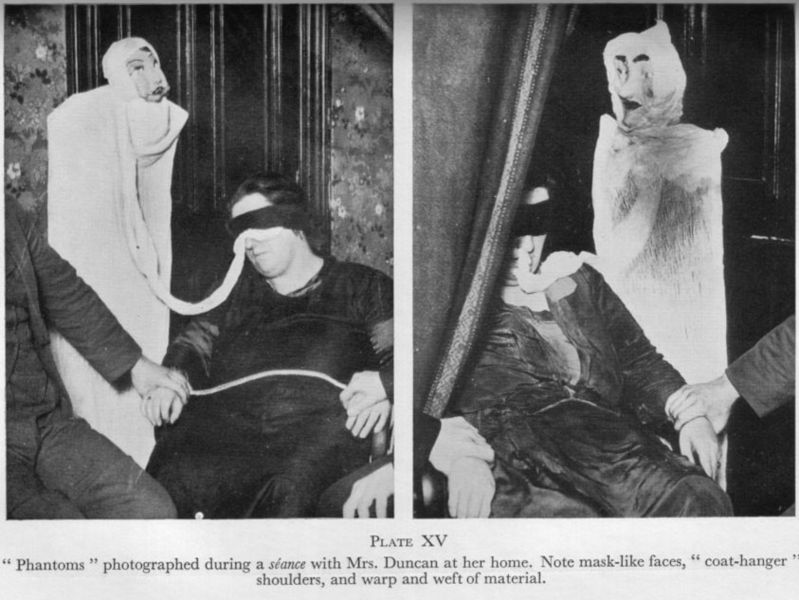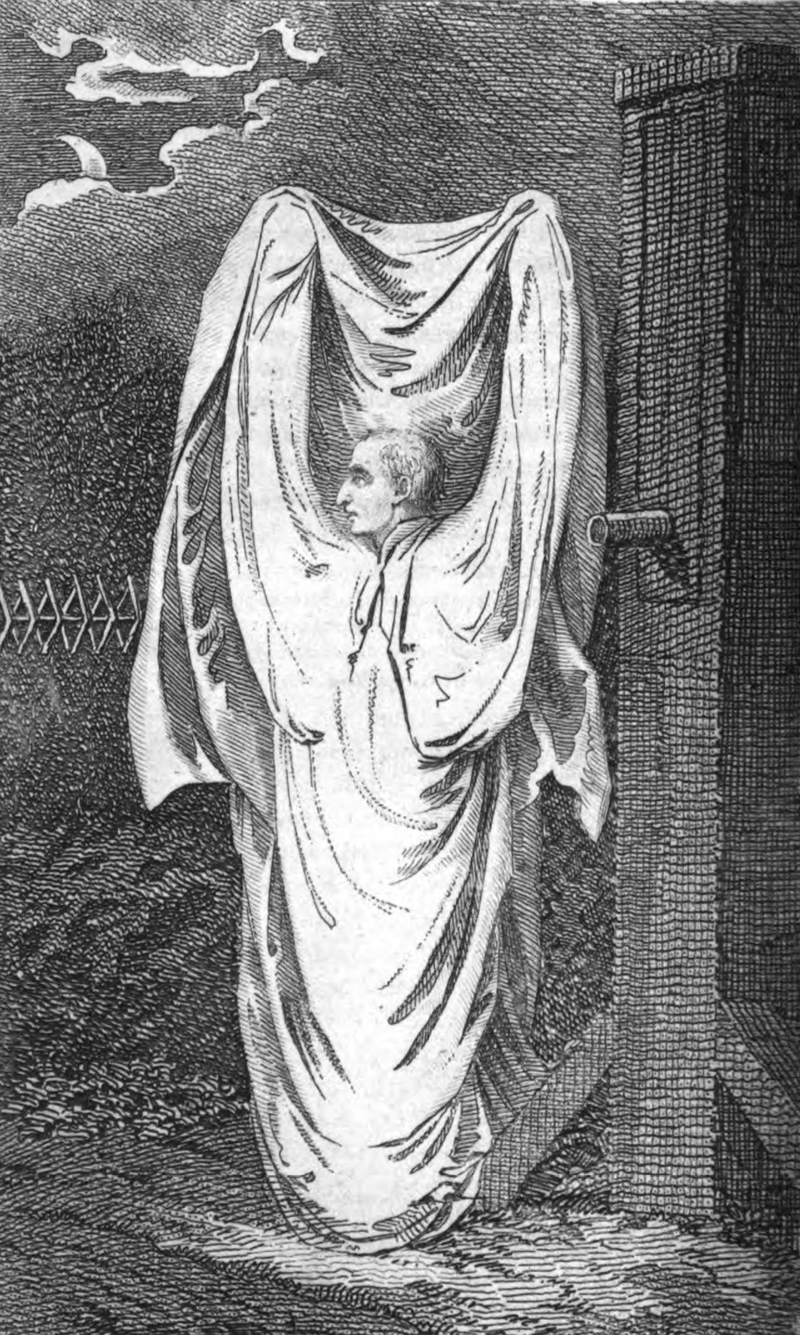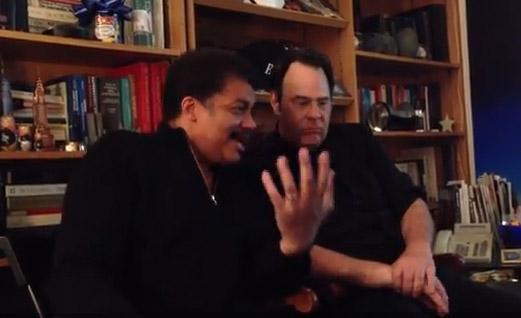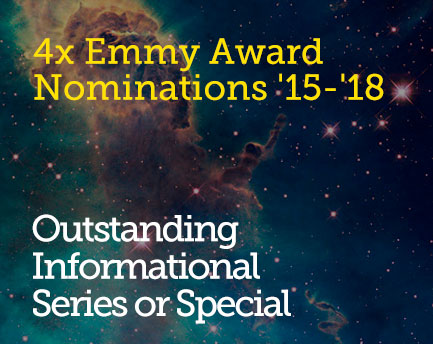October 26, 2016 8:10 pm
Ghost Stories and Spooky Science
This guest blog post is by Alex Hanson, StarTalk’s STEAM intern. She is a junior at NYU and founder/editor of HERpothesis, which showcases work by creative young women inspired by STEAM.
As part of my internship here at StarTalk, I get to go through older episodes and create timelines for our recent website relaunching. I’m almost embarrassed to admit what happened when I came to season’s two’s Spooky Science episode: it was about eleven on a Thursday night, it was dark, no one else was home, and I was too scared to listen to it. While I trusted Neil deGrasse Tyson and co-host Eugene Mirman to debunk myths of the paranormal, I was still afraid they would include some kind of unexplainable ghost story – something so strange that it had to be a haunting. Even talking about ghosts would give me the creeps before bedtime, so I shut down my computer and went to sleep.
The next morning, I revisited the episode with the comfort of broad daylight and the population of a busy coffee shop. I soon realized, though, that it was silly for me to have been afraid of listening to “Spooky Science” before bed – in fact, the episode has made me less afraid of ghosts lurking around in the dark. “Spooky Science” takes a rational approach to the signs that typically indicate a paranormal presence, such as electronics turning on in the middle of the night, mysterious lights in photographs, and even moving visions in the corner of your eye.
Neil and Eugene enlist a crew of experts to talk about the history of ghost detection and how most instances of ghostly interaction can be explained with logic. Mary Roach, a StarTalk veteran who also appeared in both parts of Packing for Mars, both parts of The Science of Sex, Cosmic Queries: The Science of Humans at War, and authored Spook: Science Tackles the Afterlife, discusses the correlation between technological development and changes in ghost-hunting methods throughout history. Phil Plait, another StarTalk regular who some may know as the Bad Astronomer, touches on representations of ghosts in movies like Ghostbusters and Ghost. Paranormal investigator Joe Nickell outlines how he finds explanations for the unexplainable, as well as the time he caught a “real” ghost (who turned out to be a desk clerk pulling a prank). Science comedian Brian Malow questions why ghosts are never seen naked – do they issue generic white gowns to all who enter “the other side”?

Helen Duncan was well known for using dolls and other props in her séances as ectoplasm. Image and caption credit: https://en.wikipedia.org/wiki/Ectoplasm_(paranormal)
Fundamentally, I don’t believe in ghosts. That being said, I will lose sleep if someone even mentions a personal haunting experience within two hours of sundown, and I’ve never been able to completely understand this fear. “Spooky Science” took me through the history, technology, and biology behind the events some call ghost sightings. I’ve seen my fair share of ghost-hunting shows in hopes of softening my fears, but none of them ever got down to the truth the way this StarTalk episode did. I learned that ghost iconography changed with the development of flash photography: people didn’t see ghosts as abstract, transparent apparitions until dust particles created glowing orbs in photographs. The concept of ectoplasm was first introduced by a medium with a magician’s skills and a whole lot of cheesecloth. Even brief visions of moving figures in your peripheral vision can be explained with a little bit of physics. British lecturer Vic Tandy found that if a low-frequency sound matches the resonant frequency of your eyeball, it can cause it to vibrate and create visions (learn more about this at 8:30 in the episode). Listening to this episode felt like taking a look behind the curtain of every ghost story and realizing that there really is nothing to fear.

An illustration of a ghost, published in a magazine in 1804. Our collective perception of what a ghost might look like has changed dramatically since then. Image credit: Wikipedia https://en.wikipedia.org/wiki/Ghost.
For those who still want to believe – and who doesn’t want to believe that some part of themselves will exist beyond death? – I’d suggest you also take a listen to both parts of A Conversation with Dan Aykroyd. The first of these episodes, hosted by Neil deGrasse Tyson with co-host Chuck Nice and in-studio guest Charles Liu, addresses Aykroyd’s perspective on the science of comedy and his fascination with crystal skulls. Part two is all about the paranormal, including Aykroyd’s family history with spiritualism, his favorite ghost stories, the inspiration for Ghostbusters, aliens, and divine intervention. Aykroyd’s telling of the story behind the Ghost of Flight 401 is spooky to say the least. His take on ghost stories and apparitions is a fascinating listen for Ghostbusters fans and those who feel they may be harboring irrational fears about the paranormal (like me).

Neil deGrasse Tyson and Dan Aykroyd Telling Ghost Stories. Photo Credit: Laura Berland.
Between Spooky Science and A Conversation with Dan Aykroyd, I feel as though I should be able rationalize just about any “ghost” that comes my way. If I can approach the next strange noise in the night or moving shadow in the corner of my eye with a little bit of logic and science, then I’ll be just fine. That being said, I’m still going to avoid ghost stories before bedtime. Just in case.
Get the most out of StarTalk!
Ad-Free Audio Downloads
Ad-Free Video Episodes
Stickers & Mugs
Live Streams with Neil
Priority Cosmic Queries
Early-Access Videos
Learn the Meaning of Life
...and much more

 Become a Patron
Become a Patron

